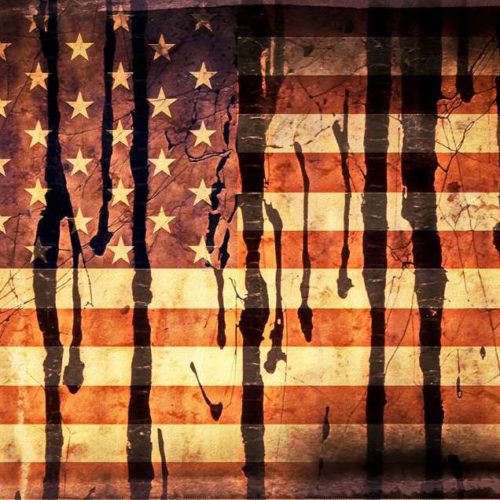Introduction
While touting the importance of environmental justice, the U.S. Environmental Protection Agency is pushing a draft “framework” for tackling the problem that lacks substance, residents of polluted communities, advocates and agency employees say.
Last week, the EPA’s Office of Environmental Justice released more than 600 public comments filed by environmental groups, trade associations, academics and citizens on what it calls the “EJ 2020 Action Agenda,” a proposed plan for advancing environmental justice over the next five years. The little-noticed release included commentary from activists, industry representatives, state regulators and city officials, among others. They are seeking to influence the EPA as it finalizes the plan next year.
EJ 2020 is meant to build on Plan EJ 2014, which the EPA says “laid a foundation for integrating environmental justice in all [agency] programs.” That plan produced guidelines on public participation in the permitting process, for instance, and prompted EPA officials to create the EJSCREEN — a mapping tool that enables regulators to overlay demographic and environmental data to target low-income and minority communities that may be unduly burdened by pollution.
Under the latest plan, which amounts to a fleshed-out table of contents, EPA officials will focus on three overarching goals: integrating environmental justice into enforcement, rulemaking and permitting efforts; increasing collaboration with communities and states; and producing “outcomes that matter to overburdened communities.”
Residents of such communities and advocates give the EPA credit for soliciting feedback. But they fault the agency for continuing a longstanding pattern of putting process over substance. Rather than confront disparities, they say, the EPA’s plan focuses on symbolic steps — opening more processes, or creating more tools — which do little to change environmental conditions on the ground.
“Environmental justice has got to be real,” said Marianne Engelman Lado, a senior attorney at the public-interest law firm Earthjustice, which submitted 42 pages’ worth of comments on behalf of 47 environmental and community groups. Engelman Lado called the EPA’s goals “admirable,” but said they have translated into “very little” for disadvantaged communities so far.
While admittedly bare bones, the framework gives some sense of what the EPA considers crucial for combating environmental injustice, sources say. Many say the biggest omission is EJ 2020’s divorce from Title VI of the Civil Rights Act of 1964. The federal law — which prohibits racial discrimination, and serves as the foundation for the EPA’s mandate on environmental justice — is relegated to a single bullet point under the heading, “Related efforts.” The reference notes the EPA’s civil-rights office is currently developing “a long-term, comprehensive” strategic plan.
In August, the Center for Public Integrity published a seven-part series, “Environmental Justice, Denied,” examining how the EPA’s Office of Civil Rights has failed to enforce Title VI and frustrated communities across the country. The agency’s civil-rights office has dismissed nine out of every 10 community claims alleging environmental discrimination, the Center found. In its 23-year history of processing such claims, the office has never once issued a formal finding of a Title VI violation.
After the series ran, the EPA announced that its civil-rights office would begin publishing annual progress reports. Last month, the office released its draft strategic plan, which pledges to conduct more aggressive compliance reviews for recipients of EPA funding — mainly, cities and states — as well as other reforms.
Critics see the Title VI footnote in the EJ 2020 framework as just another sign that EPA officials still do not take the agency’s civil-rights office seriously. When the agency released its Plan EJ 2014, officials overlooked the civil-rights law, sparking similar criticisms. Eventually, the EPA issued a supplement dedicated to civil rights.
‘Same old story’
The EPA told the Center this week it agrees with commenters who are pushing for additional details and measurable goals in the final EJ 2020 plan.
“The draft framework was intended to seek comment on the outline, understanding that much more work will be done to focus attention and assure that we can be held accountable for progress,” an agency spokesman wrote in an email. “Next steps include developing implementation plans that include deadlines, milestones, and measures.”
Beyond demanding more details, commenters offered another suggestion for the framework: incorporate additional ways to collaborate with community groups and local governments to ensure that environmental-justice efforts work as intended on the ground. Still others called for the EPA to expand green infrastructure and access to parks and open space in low-income and minority neighborhoods.
For people like Naeema Muhammad, of the North Carolina Environmental Justice Network, whose members live in predominantly African-American and low-income neighborhoods near hog farms, sewage fields, and dumps, EJ 2020 must contain “something” to show the EPA will achieve environmental justice before citizens believe it. She and fellow residents have long testified before EPA officials, and hosted tours of areas burdened, again and again, by what she calls “dirty industries.” Already, they have heard the agency promise to address environmental discrimination.
“We’re tired of telling the same old story . . . and nothing changes,” she said, echoing the sentiments of residents from Texas, Missouri, California and Oregon, whose comments expressed frustration over the EPA’s environmental justice efforts to date.
“It’s like crying wolf,” Muhammad said, noting that the EPA, in its draft EJ 2020 plan, does not mention the word ‘racism.’ “If they cannot recognize environmental racism for what it is,” she said, “they can’t promote change.”
About a quarter of all commenters called for the EPA to incorporate Title VI compliance and enforcement into the EJ 2020 framework, as well as “all aspects of agency operations.”
Even some inside the agency agree. According to Public Employees for Environmental Responsibility (PEER), a whistleblower group for public servants, EPA employees who have worked on issues involving environmental justice and civil rights asked the group to file comments on their behalf, echoing the criticisms surrounding Title VI enforcement. The employees “chose to use PEER as a channel for venting frustrations they have tried unsuccessfully to resolve internally,” the group’s director, Jeff Ruch, told the Center.
In its comments, PEER blasted EJ 2020 for “continu[ing] and, in fact, worsen[ing] core flaws that have weakened and marginalized EPA’s environmental justice program,” including separating the agency’s environmental-justice efforts from civil rights law.
“At EPA civil rights has fallen off the environmental justice table,” the group wrote.
In an email to the Center, Ruch argued that EPA officials have failed to veto or block a single pollution permit of any kind on environmental-justice grounds. Nor has the agency taken any enforcement action because a facility’s permit violations have caused disproportionate impacts on communities of color.
“For EPA to move beyond empty rhetoric, it has to begin taking [such] concrete identifiable actions,” Ruch wrote.
Few industry comments
In response to the criticisms, the EPA spokesman pointed to the civil-rights strategic plan, which, in his words, “chart[s] our course over the next five years and invigorates EPA’s civil rights mission.” He added that the civil-rights plan — “with implementation details, deliverables, deadlines, etc.” — is open for public comment.
Not everyone is urging the EPA to use civil-rights law to achieve environmental justice. Few industry representatives commented on EJ 2020, let alone mentioned the law. The lone industry voice invoking Title VI — the Business Network for Environmental Justice, a coalition of companies and trade groups based at the National Association of Manufacturers — advocated against its enforcement.
In its comments, the BNEJ said the EPA has implemented an “overreaching interpretation” of the civil-rights law over the past 15 years — even though the agency’s own record shows it rarely takes action in Title VI cases.
Other industry representatives, such as the Texas Pipeline Association, offered the standard industry arguments against changes to the status quo — no new regulations, no new permit requirements, no “undue burden on the regulated community.”
“The federal rules that are already in place are more than sufficient to ensure environmental protection for all citizens,” the association wrote.
Some, meanwhile, want the EPA to expand its environmental-justice initiatives beyond traditional definitions. Paul Wright, who heads the Human Rights Defense Council, a national prisoners’ rights group, believes the agency should include the plight of inmates — most of whom are poor and people of color — in its environmental-justice strategy. Prisons are often built on toxic waste dumps or abandoned coal mines, he said.
“This is just another example of a [plan] that has promise,” said Wright, whose comments were co-signed by 91 social justice and prisoners’ rights groups nationwide, adding that prisoners and their surrounding neighbors are “being ignored and viewed as expendable.”
Others, like Virginia Ruiz of Farmworker Justice, want EPA officials to crack down on pesticides — mandating warning labels in Spanish, for instance, or reaching out to farmworkers about exposures. “I’d be pleasantly surprised,” said Ruiz, who directs the group’s health initiatives, if the EPA’s final framework included any recognition of farmworkers as a unique environmental justice community.
“We bring it up year after year,” Ruiz said, “but don’t see a lot of progress.”
The EPA’s public comment period on the draft EJ 2020 plan officially ended on July 14. Agency employees are incorporating the comments into the final plan, expected to be released in early 2016.
Read more in Environment
Environment
Hot mess: states struggle to deal with radioactive fracking waste
Potentially dangerous drilling byproducts are being dumped in landfills throughout the Marcellus Shale with few controls
Environment
Side benefit of climate accord: Better health in polluted communities
Areas besieged by smog and other toxic emissions could benefit from the pact approved Saturday



Join the conversation
Show Comments